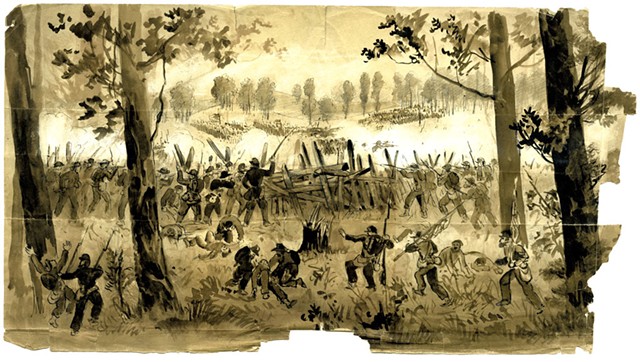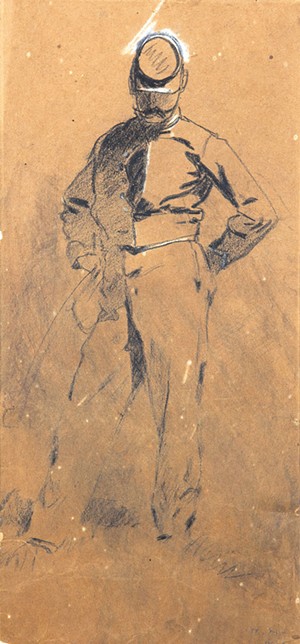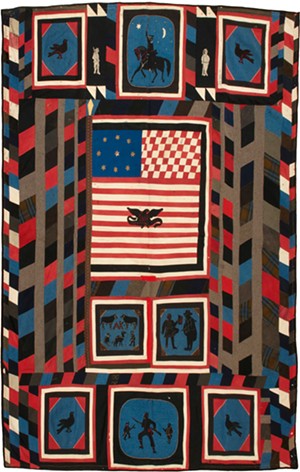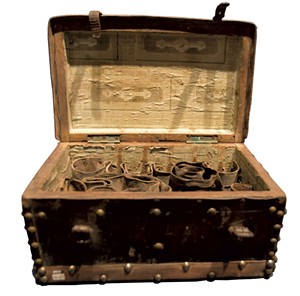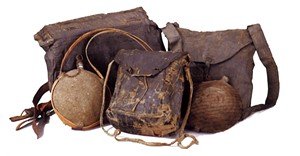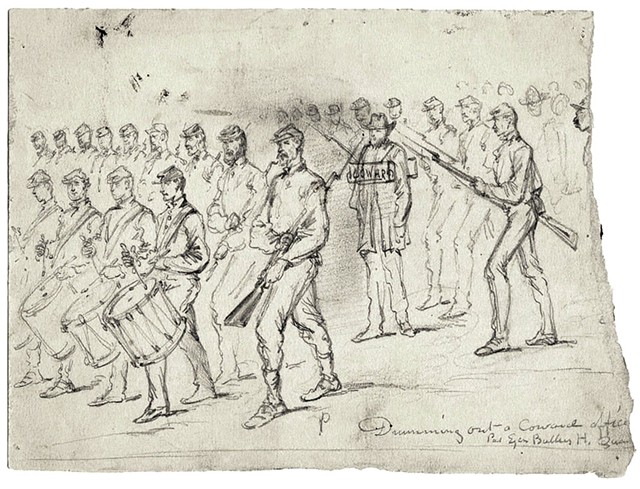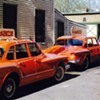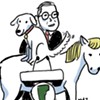Switch to the mobile version of this page.
Vermont's Independent Voice
- News
- Arts+Culture
- Home+Design
- Food
- Cannabis
- Music
- On Screen
- Events
- Jobs
- Obituaries
- Classifieds
- Personals
Browse News
Departments
-
Education

Scott Official Pushes Back on Former State…
-
News

Burlington Budget Deficit Balloons to $13.1 Million
-
Education

Senate Committee Votes 3-2 to Recommend Saunders…
- Court Rejects Roxbury's Request to Block School Budget Vote Education 0
- Norwich University Names New President Education 0
- Media Note: Mitch Wertlieb Named Host of 'Vermont This Week' Health Care 0
Browse Arts + Culture
View All
local resources
Browse Food + Drink
View All
Browse Cannabis
View All
-
Culture

'Cannasations' Podcaster Kris Brown Aims to 'Humanize'…
-
True 802

A Burlington Cannabis Shop Plans to Host…
-
Business

Judge Tosses Burlington Cannabiz Owner's Lawsuit
-
Health + Fitness

Vermont's Cannabis Nurse Hotline Answers Health Questions…
-
Business

Waterbury Couple Buy Rare Vermont Cannabis License
Browse Music
View All
Browse On Screen
Browse Events
Browse Classifieds
Browse Personals
-

If you're looking for "I Spys," dating or LTRs, this is your scene.
View Profiles
Special Reports
Pubs+More
Commemorating the Civil War Sesquicentennial in Vermont
Published October 1, 2014 at 10:00 a.m. | Updated October 8, 2020 at 5:13 p.m.
Robert Penn Warren wrote that "many clear facts about America are best understood in reference to the Civil War." This comment from his book The Legacy of the Civil War, published in 1961, reappears on the website for the Vermont Humanities Council's 2014 fall conference. And no wonder: The two-day event next month at the University of Vermont is titled "A Fire Never Extinguished: How the Civil War Continues to Shape Civic and Cultural Life in America." One hundred and fifty years later, we're still talking about it.
In fact, we've been commemorating the sesquicentennial for four years — the war lasted from 1861 to 1865 — but as we approach the final marker, the number of events and exhibitions in Vermont has mushroomed. "Nationally, the U.S. has just kind of woken up to the Civil War [anniversary]," observes Tom Denenberg, director of the Shelburne Museum. "In the last year, we're suddenly all doing shows."
It's not like Ken Burns didn't give us a huge heads up: His documentary series The Civil War came out in 1990.
Shelburne Museum's new touring exhibit, "Homefront & Battlefield: Quilts and Context in the Civil War," is one of several shows this fall that contribute to the Civil War conversation — and not in the ways you might expect. That one looks at the era largely through the lens of the 19th-century textile industry.
Meanwhile, UVM's Fleming Museum of Art offers three distinct exhibits: a stunning collection of battlefield drawings from so-called "special artists" (today we call them embedded journalists); a contemporary exhibit of prints by art star Kara Walker that address race, gender and history; and an engaging selection of Civil War-era art and artifacts culled from university archives.
Norwich University's Sullivan Museum and History Center got an earlier start with "1864: Some Suffer So Much," which opened last January. Focused on medical conditions and treatment during the war, it's paired with an exhibit about the history of posttraumatic stress disorder.
We describe those exhibits in more detail below. At the bottom of the page there is a round up of smaller current exhibits, talks and other forthcoming programs.
Collectively, all this information may seem like overkill to anyone but the most enthused Civil War historian. But paying attention might be a good idea. Though Americans are reputed to have short attention spans — and memories — the Civil War is still shaping our civic and cultural life, in ways large and small.
"To this day, we still play out all the issues that [the war] brought about — reconstruction, race relations," says Denenberg. He adds that the Civil War exhibits should hit home particularly in Vermont, as the war and its aftermath did. "We tend to forget that Vermont, New Hampshire and Maine disproportionately contributed soldiers to the war," Denenberg says. "The 'empty chair' played a role in the late 19th century — people emptied out of farms. The quiescence of New England after the war is inextricably tied up in our history."
The "fundamental reorganization of the American economy and social geography," Denenberg concludes, "wasn't just about the South."
These exhibits don't merely speak eloquently to conditions on the battlefield and the homefront during the war; they also reveal ways in which the conflict brought about "firsts" — such as a hospital system and veterans' pensions — and how it burdened a still-young nation with the inestimable task of repairing itself. That's still a work in progress.
Kevin Thornton is a Brandon-based Civil War historian and fellow at the UVM Center for Research on Vermont. He points to a basic problem with the way America tends to remember that war: with "a sentimental focus on the courage and loss of soldiers.
"That's fine," he continues, "but it glosses over differences between the North and the South, and loses the disagreements that the war was based on."
Vermonters, and Union states generally, reveled in being on the "right side" and congratulated themselves for their noble sacrifices, Thornton says. One of the consequences? "The state of African Americans is kind of abandoned."
Thornton will speak next month at the Fleming Museum on "Mourning and the Civil War in Vermont." His talk returns to another central theme of the Civil War period: the massive loss of life, and how that loss framed reality for everyone left behind. About a million people died, out of a national population of 30 million: "It was a cataclysmic event," says Thornton.
"People should think about what was, and still is, at stake," he continues. "Questions about who's an American and who's equal. That matters. It's an essential question about the nature of America. That's why we should remember ... the Civil War is an important part of where and who we are today."
'Civil War Objects From the University of Vermont Collections'
On view through May 17, 2015, at the Fleming Museum of Art, UVM, in Burlington. $3-5. Info, 656-0750. uvm.edu/~fleming
It may or may not have been curator Margaret Tamulonis' intention, but this exhibit in the Fleming Museum's Wilbur Room — drawn from the Fleming, Dana Medical Library and Special Collections at Bailey/Howe Library — makes a powerful antiwar statement.
It includes, for example, a magnified, printed rendition of an anguished handwritten letter that Henrietta Parker of Vergennes sent to her son, Union Army Capt. Charles Parker, on Christmas Day, 1862. "I am sick sick Heartsick, of this War, and I want my Son out of it and I must have you out of it," Parker wrote. "They accomplish nothing but the slaughtering of thousands, and to all appearances it is all they will accomplish."
click to enlarge 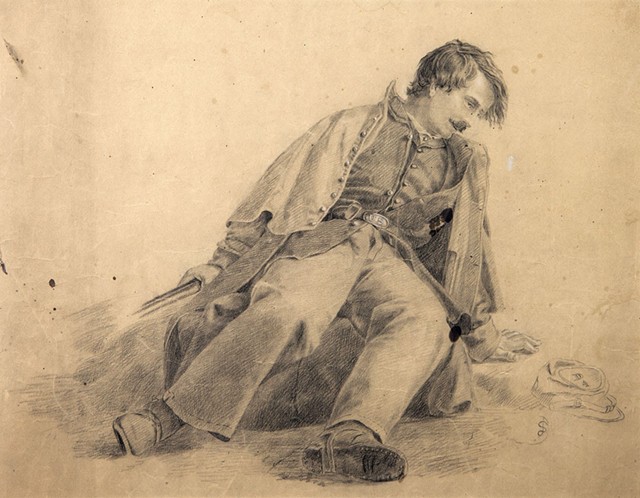

- Courtesy Of Fleming Museum;
- Drawing of a wounded soldier by Vermont artist Julian Scott
Capt. Parker was not among those slaughtered, as it happened. He survived the war to become mayor of Vergennes and a state legislator.
A Winslow Homer study for his stark and eloquent oil painting "Trooper Meditating Beside a Grave" hangs near a drawing by Vermont artist Julian Scott of an apparently wounded soldier. Scott, who enlisted in the Union Army as a 15-year-old drummer, went on to paint the enormous "Battle of Cedar Creek," on permanent display in the Statehouse in Montpelier.
If some of the artworks in this selection are moving, a few of the artifacts are downright chilling. A medical register compiled by Dr. Henry James, born in Waterbury in 1832, is opened to a page containing photos of three Vermont soldiers he treated. Each man had a leg amputated.
An unmotorized chainsaw is among the items displayed in a "Bone Exsection Kit" that belonged to Union Army surgeon H. Hernstein. An accompanying text reports that Union and Confederate doctors carried out more than 60,000 amputations during the course of the conflict.
The show's introductory text notes that 10 percent of the state's population — 34,000 Vermonters — marched off to war between 1861 and 1865. It would not have been uncommon 150 years ago to encounter a Vermont veteran missing a limb or two.
The show's freakiest piece is a 152-year-old biscuit on which Vermonter Charles Wainwright wrote a letter to his mother. He was sending the "hardtack," Wainwright explained, as a sample of soldiers' rations, which he regarded as fairly tasty (though one wonders if he was being facetious). The hardy condition of this biscuit confirms the curator's note that hardtack was made to be impervious to insects and spoilage.
Other curios — not all dumbfounding, but still interesting — include a 34-star Union flag; a tulip quilt sewn by the women of the Plainfield Congregational Church to raise funds for soldiers' families; and a pike used in the raid that John Brown conducted on a Union arsenal at Harper's Ferry in hopes of instigating an armed uprising against slavery.
Don't be put off by the show's bland title. Seeing it will deepen your understanding of the human cost of the Civil War — or any war.
'Homefront & Battlefield: Quilts and Context in the Civil War'
On view through January 4, 2015, at the Pizzagalli Center for Art and Education, Shelburne Museum. $11-22. Info, 985-3346. shelburnemuseum.org
"When civil war broke out in America," writes the Shelburne Museum, "the very fabric of life was altered." Call it a pun, a cliché or a metaphor, but that phrase the very fabric of life could not be more apt in reference to both this exhibit and a central facet of life in the 19th century. One word: cotton.
Yes, the Civil War was about slavery, and states' rights, and the sharp ideological divide that very nearly scotched a nascent Union and democracy itself. But in the narrative of that devastating four-year conflict, the textile industry stands paramount. "Homefront & Battlefield: Quilts and Context in the Civil War" takes on that story, and stitches it together with a rather remarkable collection of objects and personal anecdotes.
Curated by Madelyn Shaw and Lynne Zacek Bassett at the American Textile History Museum in Lowell, Mass. — and curated for the Pizzagalli by Carolyn Bauer — the touring exhibit shows us the relationship of southern cotton plantations to (mostly) northern mills. "In 1860, nearly 4 million men, women and children were enslaved," reads one legend. "Clothing them was an industry in itself." And so the slaves picking cotton under a hot sun and the so-called "shoddy" cloth on their backs — coarsely woven and simply constructed — represented two ends of a closed loop. The North profited from this system. In 1860, we're told, Rhode Island led the nation in the production of slave cloth.
When the war began, the mills — and sewing women at home — had a new mission: Soldiers, both the blue and the gray, needed uniforms, blankets, socks, bandages and other paraphernalia. Like any war, this one also required its flags, banners and patriotic regalia. And, in short order, it necessitated the accouterments of the bereaved. The exhibit catalog for "Homefront & Battlefield" details this development plainly:
Mourning fabrics of every quality and price were available. In the North, several manufacturers specialized in mourning prints, and many firms produced medium quality black woolens. Finer quality dull silks or mixed silk and wool goods, however, such as poplins or bareges, were imported from European makers. A sales sample book from Boston's Jordan Marsh & Co. department store dating to the 1860s contains dozens of swatches of black fabrics ... Gray (also called slate or lead color), purple, lavender, and white were all acceptable choices for the later stages of mourning.
Yes, the widows and children at home had to be clothed, too, and often fashionably.
Rather than taking a cynical attitude toward such attire, "Homefront & Battlefield" simply presents examples of these items to show the other kind of divide implied in its title. The exhibit does not suggest that, while men were dying, it was business as usual back home. Far from it. There was suffering and privation all around, and women and girls undertook ample "war efforts." "Urgent appeals in papers sent women into frenzied activity," notes one text.
Along with the socks and mittens and quilts they stitched and sent off via aid societies, women often would include notes to soldiers. An example:
My dear friend,—You are not my husband nor son; but you are the husband and son of some woman who undoubtedly loves you as I love mine. I have made these garments for you with a heart that aches for your sufferings...
The women hoped to provide solace along with warm clothing, but also, write the curators, to "strengthen a soldier's bonds to his home and preserve him from the corrupting influences of rough, male camplife."
"Homefront & Battlefield" does not gloss over the horrors of the Civil War era — the existence of slavery, the deeply miserable conditions of soldiers, the devastating number of casualties. It includes historical items such as an American flag that was presented to President Lincoln just days before his assassination, and the noose that was used to hang radical abolitionist John Brown. And, yes, there are plenty of quilts, including one made by a wounded Union soldier during his hospitalization.
The strength of this exhibit, however, lies in the personal stories behind the objects — such as the one about that soldier's quilt. He had been captured by Confederates, we learn, then escaped and was sheltered by a female slave. Later, during racial conflict back home in Oklahoma, the man had occasion to protect an African American woman in his turn.
Such stories humanize the Civil War in a way that a history-class recitation of battles and casualty statistics, of "winners" and "losers," cannot. With its unique framework of textiles, "Homefront & Battlefield" indeed allows us a glimpse of the "fabric of life" during wartime.
Kara Walker, 'Harper's Pictorial History of the Civil War (Annotated)'
On view through December 12 at the Fleming Museum of Art, UVM, in Burlington. $3-5. Info, 656-0750. uvm.edu/~fleming
Visitors to the Fleming this fall have the chance to glimpse the glow of one of the brightest stars in the contemporary-art constellation.
The work of Kara Walker was a trending topic in this summer's culture news as more than 100,000 New Yorkers and tourists trekked to an abandoned Domino sugar factory in Brooklyn to view a monumental sugar-and-polystyrene sphinx that the 44-year-old African American artist had installed there. "A Subtlety, or the Marvelous Sugar Baby" was typically provocative. It featured the caricatured Negroid facial features characteristic of Walker's art, which assaults us with, rather than merely addresses, themes of race, gender and U.S. history.
click to enlarge 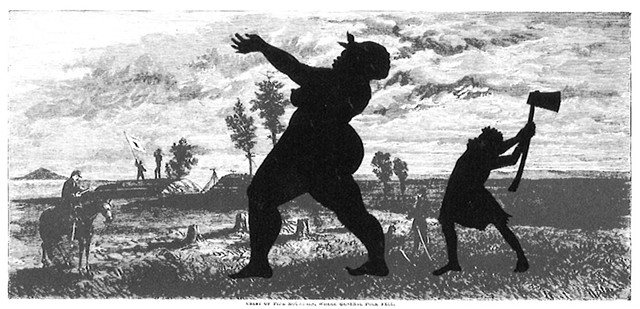

- Courtesy Of Fleming Museum
- "Crest of Pine Mountain, Where General Polk Fell"by Kara Walker
Now the Fleming is presenting a dozen of Walker's large-scale, black-on-white prints in the Wolcott Room, on loan from the Mount Holyoke College Art Museum in South Hadley, Mass. Combining lithography and screen-printing, these pieces, created in 2005, serve as a comparatively tame introduction to the artist's oeuvre, which has grown edgier over the past decade.
For these, Walker appropriated woodcut plates from Alfred H. Guernsey and Henry M. Alden's Harper's Pictorial History of the Civil War, first published in 1866. She then enlarged the illustrations and reprinted them using offset lithography. Finally, Walker screen-printed them with her signature silhouettes — profiles, full bodies and, in some cases, body parts — in inky black.
The suite of images on display at the Fleming may be familiar to some Vermonters. The Middlebury College Museum of Art presented the same collection five years ago as part of a show of contemporary artists' interpretations of American history.
Walker's racially and sexually charged art incorporates stereotypical and derogatory images with the aim of diminishing their destructive power. The tactic is similar to some black rappers' use of the word "nigger" as a means of draining the slur of its venom.
Not everyone gets that message, however. Some older black visual artists have denounced Walker's work on the grounds that the caricatures fuel racism rather than defuse it.
Exaggerated lips and noses dominate the faces that she superimposes on what were originally landscape or genre scenes of Civil War battles. Breasts, vaginas and penises frequently appear in Walker's work as well, though they're not always attached to the expected gender. There's a slapstick quality to many of her mashups, with cartoonish characters dashing about or striking contorted poses.
But none of it is very funny. In "Buzzard's Roost Pass," for example, a disembodied black female head floats between two mountains, its mouth a rictus of death. Jagged strips jut from where its neck should be. A torn-off arm hovers outside the picture plane, while detached breasts rise and sink like hot-air balloons. Violence with racial overtones is an element in many of Walker's seemingly playful depictions.
Her radical interventions in Civil War setpieces force contemporary viewers to consider the racial component of the conflict and to reflect on its reverberating legacy in places like Ferguson, Mo.
'1864: Some Suffer So Much'
On view until December 19 at the Sullivan Museum and History Center, Norwich University, in Northfield. Free. Info, 485-2183. academics.norwich.edu/museum
Despite its small population, Vermont has always played an outsize role in American military campaigns — and no Vermont institution has contributed more to those efforts than Norwich University. This was especially true during the Civil War, when Vermonters held key leadership roles not just in combat, but also in providing care for soldiers returning home with physical and psychological wounds.
Now, a temporary exhibit at the university's Sullivan Museum and History Center recognizes the contributions of Norwich alums and other Vermonters in the development of combat medicine, veterans' hospitals and soldiers' homes. The exhibit, named "1864: Some Suffer So Much" after a verse from Walt Whitman's "The Wound Dresser" — about the poet's experiences as a volunteer nurse in military hospitals — also provides a historical context for the phenomenon we now call posttraumatic stress disorder.
Though not large, the exhibit includes several Civil War-era medical artifacts, including a physician's case, a surgeon's knife, a tooth extractor and a bloodletting blade. The last was also used for inoculating soldiers against smallpox by slicing their arms and injecting them with the blood or pus of an infected soldier. Also on display is an authentic military field chair, made of carpet material similar to that used by the notorious carpetbaggers of the Reconstruction era.
As interesting as the local photos and artifacts are the texts explaining Vermont's role in creating a national medical establishment that's still in existence today.
"We didn't really have a hospital system prior to the Civil War. It was really developed as a result of the war," explains Sarah Henrich, director of the Sullivan, who helped create the exhibit. In fact, it was Vermont's then-governor, Frederick Holbrook, who helped convince President Abraham Lincoln and Secretary of War Edwin Stanton in 1862 that wounded soldiers would recover faster if they were sent not to field hospitals but to hospitals in their home states.
In response, Brig. Gen. Jedediah Baxter, surgeon general of the army and one of 12 Norwich alums who served as combat surgeons during the Civil War, was charged with establishing military hospitals throughout the Northeast. They included three in Vermont: Baxter General Hospital in Burlington, Smith General Hospital in Brattleboro and Sloan General Hospital in Montpelier. Baxter, a Strafford native, is also credited with compiling the names of more than one million men who served in the war to establish the nation's first veterans' pension fund.
Among the most compelling and timely elements of the exhibit is a kiosk that traces the history of PTSD. Accounts of the condition, called Heimweh in German and maladie du pays in French — both translate as "homesickness" — date back at least 3,000 years. Egyptian war veteran Hori described his feelings of terror before entering battle. The ancient Greek historian Herodotus, in recounting the battle of Marathon in 490 BCE, described an Athenian warrior who went blind after a soldier beside him was killed, though he himself suffered no physical wounds.
The exhibit acknowledges that it's not only soldiers who suffer from PTSD. Englishman Samuel Pepys, in his account of the Great Fire of London in 1666, described his own PTSD-like symptoms when he learned of even minor fires in the months following that conflagration.
The Civil War, the first in which killing was accomplished with industrial efficiency, resulted in epidemic levels of the condition then dubbed "soldier's heart" or "nostalgia." The malady was so widespread that army doctors pleaded with Lincoln's war department to screen recruits for susceptibility to psychological breakdowns. (Vermonter Dennis McFarland's novel Nostalgia: A Novel, named one of the Washington Post's 50 best books of 2013, chronicles the harrowing tale of one such afflicted soldier.)
Civil War vets who suffered from PTSD were often treated abysmally. As the exhibit notes, "The most deplorable result of extreme cases were [sic] those men sent home with the name of their hometown pinned to their tunics or left to wander about the countryside until their lives ended from exposure or starvation."
Invariably, it fell to the women to care for these battle-scarred men, many of whom wandered aimlessly around Burlington, unable to work or care for themselves. So severe was the public outcry about these vets' mistreatment that it led to the formation of the nation's first soldiers' homes.
As the exhibit points out, the name, diagnosis and treatment of PTSD has come a long way since World War II, when Gen. George Patton slapped two soldiers diagnosed with "battle fatigue," calling them "weaklings" and "malingerers." Even so, an estimated 58,000 veterans with combat-related PTSD are currently homeless on American streets. It's clear that many vets are suffering still.
'First Hand: Civil War Era Drawings From the Becker Collection'
On view through December 12 at the Fleming Museum of Art, UVM in Burlington. $3-5; free for members and Vermont college students. Info, 656-0750. uvm.edu/~fleming
These days, journalists covering conflicts the world over expose themselves to risk of death. And a century and a half ago, the so-called "special artists" who sketched the American Civil War for newspapers back home experienced their own extreme hardships and danger. As a text panel in this exhibit of battlefield drawings notes, artist-reporters embedded with Union troops "worked under perhaps the worst conditions artists have ever encountered on an ongoing basis."
Henri Lovie's "Deliverance" hints at what these early embeds had to endure. It's a self-portrait of the exhausted artist in the aftermath of a Union defeat as he totters down the gangplank of a ship covered in 28 inches of snow.
Lovie (1829-1875) comes close to stealing this revelatory show. His skillful drawings stand out among the 100 or so created by the half-dozen special artists represented in this sampling from the collection of Joseph Becker. All the artists worked for Frank Leslie's Illustrated Newspaper, a popular weekly based in New York City. Becker, himself a war correspondent working with graphite on drawing paper, had the foresight to preserve 700 of the original pieces after he became the newspaper's art director.
The Civil War was the first also to be documented by photography, but, as the Fleming's introduction to this exhibit notes, "the journalists' drawings often provide more detail, drama and emotion than did the new technology of the camera." In addition, that technology was slow, the equipment cumbersome and less portable than an artist's sketchpad.
Within this selection, the degree of aesthetic achievement varies from artist to artist and drawing to drawing, but viewers are likely to pay more attention to the remarkable content of the work than to its quality.
In one of Becker's pieces, a soldier who deserted is shown just prior to his execution as he kneels atop what will be his coffin. An accompanying text notes that more than 260,000 soldiers deserted the Union Army during the course of the war.
Another Becker drawing depicts a group of diggers exhuming the corpse of a soldier to be sent north for reburial. The artist titled this work "Something to Coax the Appetite," employing what the show's curator identifies as "dark sarcasm of the olfactory experience."
A couple of pieces record the practice of "foraging" — a euphemism for troops' pillaging of animals and grains from local farms. Also unsettling is an unknown artist's sketch of a wounded and despondent soldier lying on a cot in a bare hospital room. It's a rare tableau, the curator points out, because newspapers were reluctant to publish interior scenes of hospitals, which were known as places where soldiers were sent to die, not to be healed.
Other images in the show exemplify the 19th-century treatment of war as valorous and glorious. Noble commanders sit rigidly upright as their well-groomed steeds prance toward the battlefield. A line of drummers flanked by trim, tall riflemen leads a procession in which a "coward officer" is being marched off in disgrace. It turns out that some of these more positive, or reassuring, portrayals were retouched before publication to reflect New York editors' conceptions of the war and to cater to the public's presumed expectation of how it should be depicted.
Some of the embedded artists managed to convey the reality of what they were seeing rather than succumbing to the role of propagandists. Edward Mullen, for instance, presents a group of Confederate POWs as bedraggled and harmless-looking figures taking an oath of allegiance to the Union. Leslie's audience may have been perplexed that he did not portray the rebels as diabolical, or at least menacing.
This touring exhibition, organized by the McMullen Museum of Art at Boston College, offers the first opportunity to view works from a collection that's fascinating both historically and artistically. Contemporary war correspondents face challenges such as speaking coherently into a tape recorder as bombs explode nearby. But sketching skillfully under similarly terrifying circumstances would likely have presented even greater difficulties for these artistic chroniclers of the Civil War.
Stories Unfolding: More on the Civil War
While no blue-versus-gray battles were fought within its boundaries, Vermont is nonetheless rich in Civil War history, as reflected in its many current and upcoming commemorations of the war's 150th anniversary. Last month saw the reenactment of the St. Albans Raid, which was not a military action per se but a heist noteworthy for embodying the complexities of North-South political tensions. The events listed here may not entail the consumption of hardtack or the wearing of oppressive woolen uniforms, but they offer plenty of interest for history buffs and curious citizens alike.
Watch Eva Sollberger's Stuck in Vermont video of the St. Albans Raid reenactment here.
"The Vermont Civil War Songbook"
Thursday, October 2
Singer Linda Radtke and pianist Arthur Zorn present an unusually melodic perspective on the Civil War. They perform period songs about the war that were written by Vermonters, many of them gleaned from the sheet-music collection of the Vermont Historical Society. Catamount Arts, St. Johnsbury, 1:30 p.m. Free. Info, 748-2600. catamountarts.org
Radtke and Zorn also perform on Sunday, October 12, 2 p.m., at the Caledonia Grange in East Hardwick; and Sunday, October 26, 4 p.m., at the First Congregational Church of Brookfield.
"Vermont and the Civil War"
Wednesday, October 8
Vermont Civil War historian Howard Coffin speaks about the contributions of Vermonters to the Civil War and the war's effects in Vermont.Montgomery Town Hall, 7 p.m. Free. Info, 326-2211. vermonthumanities.org
"Statues of Liberty: A Sesquicentennial Exhibit & Celebration"
Through Monday, October 13
"Statues of Liberty" marks the 150th anniversary of Abraham Lincoln's signing of the act that created the National Statuary Hall, penned by then-congressman Justin Morrill of Vermont. Photographs and documents recount the creation of statuary of notable figures from all 50 states. Justin Smith Morrill Homestead, Strafford. $6; under 14 free. Info, 765-4288. morrillhomestead.org
"The Coolidges, Plymouth and the Civil War"
Through Sunday, October 19
OK, so Silent Cal was born in 1872 — well after the Civil War ended. But Vermont's only native president had an abiding interest in the conflict, and this exhibit at his former homestead shows how that historical keenness shaped Coolidge's politics. The exhibit also explores how a faraway war affected even a tiny town in central Vermont President Calvin Coolidge State Historic Site, Plymouth. $2-9; free for children under 6. Info, 672-3773. historicsites.vermont.gov/directory/coolidge
"Free & Safe: The Underground Railroad in Vermont"
Through sunday, October 26
Following the stories of two fugitive slaves who found shelter at the Robinson family's Rokeby farm in the 1830s, "Free & Safe" explores the local abolitionist movement in the decades preceding the Civil War. This award-winning multimedia exhibit brings history home in a visceral way. Rokeby Museum, Ferrisburgh. $8-10; under 5 free. Info, 877-3406. rokeby.org
"Arming the Union: Gunmakers in Windsor, Vermont" and "Full Duty: The Civil War Collection of Howard Coffin"
Through Friday, October 31
Where exactly did all those Civil War munitions come from? Many of them came from Vermont. "Arming the Union" details how the Windsor machine-tool company Lamson Goodnow & Yale and other northern factories outfitted the Union Army with more than 1.5 million rifles. The collections of renowned local Civil War historian, author and collector Howard Coffin (see other listings) form the basis of "Full Duty," which uses diaries, photographs, weapons and other Civil War ephemera to tell the stories of everyday Vermont soldiers, doctors and nurses. American Precision Museum, Windsor. $5-8; under 6 and members free. Info, 674-5781. americanprecision.org
"A Fire Never Extinguished: How the Civil War Continues to Shape Civic and Cultural Life in America"
Friday and Saturday, November 14 and 15
This two-day event-packed conference, presented by the Vermont Humanities Council in collaboration with the Vermont Civil War Sesquicentennial Commission, explores the ways in which the Civil War has shaped and continues to shape American art, politics and demographics, among other topics. Featured speakers include Wesleyan University professor Lois Brown on postwar racial politics, and Harvard University professor John Stauffer on the transformative effect of the Civil War on American letters. Dudley H. Davis Center, University of Vermont in Burlington. $129; $79 for students; registration ends November 3. fireneverextinguished.org
"Service & Sacrifice: Vermont's Civil War Generation"
Ongoing
This exhibit, which the curator says will continue "for at least six months," features photographs from the Civil War as well as the famous 150-foot Andrus Civil War panorama, and shows how that war affected the lives of Vermonters in the late 19th and early 20th centuries. Admission includes access to the entire museum. Vermont Heritage Galleries at the Vermont History Center, Barre. $3-5; members free. Info, 479-8500. vermonthistory.org/visit/vermont-heritage-galleries
"Vermont in the Civil War"
The recent restoration of the golden-domed Vermont Statehouse has turned the building itself into a Civil War monument of sorts: It now looks much as it did at the war's outbreak. Several interpretive exhibits, some drawn from the collections of the ubiquitous Civil War historian Howard Coffin, inform visitors of the politics behind the state's involvement in the war. Vermont Statehouse, Montpelier. Free. Info, 828-0386. vtstatehouse.org
INFO
For additional resources on the Civil War, visit vermontcivilwar150.com. The site's "Resources" page directs readers to teachers' history kits, online educational tools and Civil War books by Vermont authors. "Places to Visit" lists the state's many Civil War parks, monuments and markers.
The original print version of this article was headlined "Life During Wartime"
Related Locations
-
Fleming Museum of Art, University of Vermont
- 61 Colchester Ave., Burlington Burlington VT 05405
- 44.48060;-73.19902
-
 802-656-0750
802-656-0750
- www.uvm.edu/~fleming/
-
Pizzagalli Center for Art and Education, Shelburne Museum
- 6000 Shelburne Rd., Shelburne Chittenden County VT 05482
- 44.37087;-73.23170
-
 802-985-3346
802-985-3346
- shelburnemuseum.org…
-
Sullivan Museum & History Center, Norwich University
- 158 Harmon Dr, Northfield Barre/Montpelier VT 05663
- 44.14168;-72.65861
-
 (802) 485-2183
(802) 485-2183
- norwich.edu
-
Be the first to review this location!
Got something to say?
Send a letter to the editor
and we'll publish your feedback in print!
Tags: History, war, museum, drawings, artifacts, collectors, Pizzagalli Center for Art and Education, Shelburne Museum, Fleming Museum, University of Vermont, Sullivan Museum & History Center, Norwich University, Fleming Museum, UVM, University of Vermont Fleming Museum of Art, Fleming Museum of Art, University of Vermont
About The Authors

Ethan de Seife
Bio:
Ethan de Seife was an arts writer at Seven Days from 2013 to 2016. He is the author of Tashlinesque: The Hollywood Comedies of Frank Tashlin, published in 2012 by Wesleyan University Press.
Ethan de Seife was an arts writer at Seven Days from 2013 to 2016. He is the author of Tashlinesque: The Hollywood Comedies of Frank Tashlin, published in 2012 by Wesleyan University Press.

Kevin J. Kelley
Bio:
Kevin J. Kelley is a contributing writer for Seven Days, Vermont Business Magazine and the daily Nation of Kenya.
Kevin J. Kelley is a contributing writer for Seven Days, Vermont Business Magazine and the daily Nation of Kenya.
Ken Picard
Bio:
Ken Picard has been a Seven Days staff writer since 2002. He has won numerous awards for his work, including the Vermont Press Association's 2005 Mavis Doyle award, a general excellence prize for reporters.
Ken Picard has been a Seven Days staff writer since 2002. He has won numerous awards for his work, including the Vermont Press Association's 2005 Mavis Doyle award, a general excellence prize for reporters.

Pamela Polston
Bio:
Pamela Polston is a cofounder and the Art Editor of Seven Days. In 2015, she was inducted into the New England Newspaper Hall of Fame.
Pamela Polston is a cofounder and the Art Editor of Seven Days. In 2015, she was inducted into the New England Newspaper Hall of Fame.
Speaking of...
-

Cosmic Creativity: Artists Show Up for the Eclipse
Apr 3, 2024 -

'Never Spoken Again' at the Fleming Museum Examines Colonialist Roots
Apr 3, 2024 -

Burlington City Council Rejects Pro-Palestine Ballot Item
Jan 23, 2024 -

Rep. Balint Reverses Course, Calls for Cease-Fire in Gaza
Nov 16, 2023 -

Protesters Disrupt Balint Fundraiser to Demand Cease-Fire in Gaza
Nov 9, 2023 - More »
Comments
Comments are closed.
From 2014-2020, Seven Days allowed readers to comment on all stories posted on our website. While we've appreciated the suggestions and insights, right now Seven Days is prioritizing our core mission — producing high-quality, responsible local journalism — over moderating online debates between readers.
To criticize, correct or praise our reporting, please send us a letter to the editor or send us a tip. We’ll check it out and report the results.
Online comments may return when we have better tech tools for managing them. Thanks for reading.
- 1. A Former MMA Fighter Runs a Wildlife Rehabilitation Center in Cabot News
- 2. Legislature Advances Measures to Improve Vermont’s Response to Animal Cruelty Politics
- 3. This Manchester Center Family Is a National Show Horse Powerhouse Animals
- 4. Welch Pledges Support for Nonprofit Theaters Performing Arts
- 5. Pet Project: Introducing the Winners of the 2024 Best of the Beasts Pet Photo Contest Animals
- 6. Q&A: Downtown Montpelier Transforms Into PoemCity Every April Stuck in Vermont
- 7. A Burlington Celebration of Nature Helps Citizen Scientists Connect With — and Count — the City's Nonhuman Residents Animals
- 1. How a Vergennes Boatbuilder Is Saving an Endangered Tradition — and Got a Credit in the New 'Shōgun' Culture
- 2. Video: The Champlain Valley Quilt Guild Prepares for Its Biennial Quilt Show Stuck in Vermont
- 3. Waitsfield’s Shaina Taub Arrives on Broadway, Starring in Her Own Musical, ‘Suffs’ Theater
- 4. Video: 'Stuck in Vermont' During the Eclipse Stuck in Vermont
- 5. Pet Project: Introducing the Winners of the 2024 Best of the Beasts Pet Photo Contest Animals
- 6. This Manchester Center Family Is a National Show Horse Powerhouse Animals
- 7. Crossing Paths: An Eclipse Crossword 2024 Solar Eclipse


























